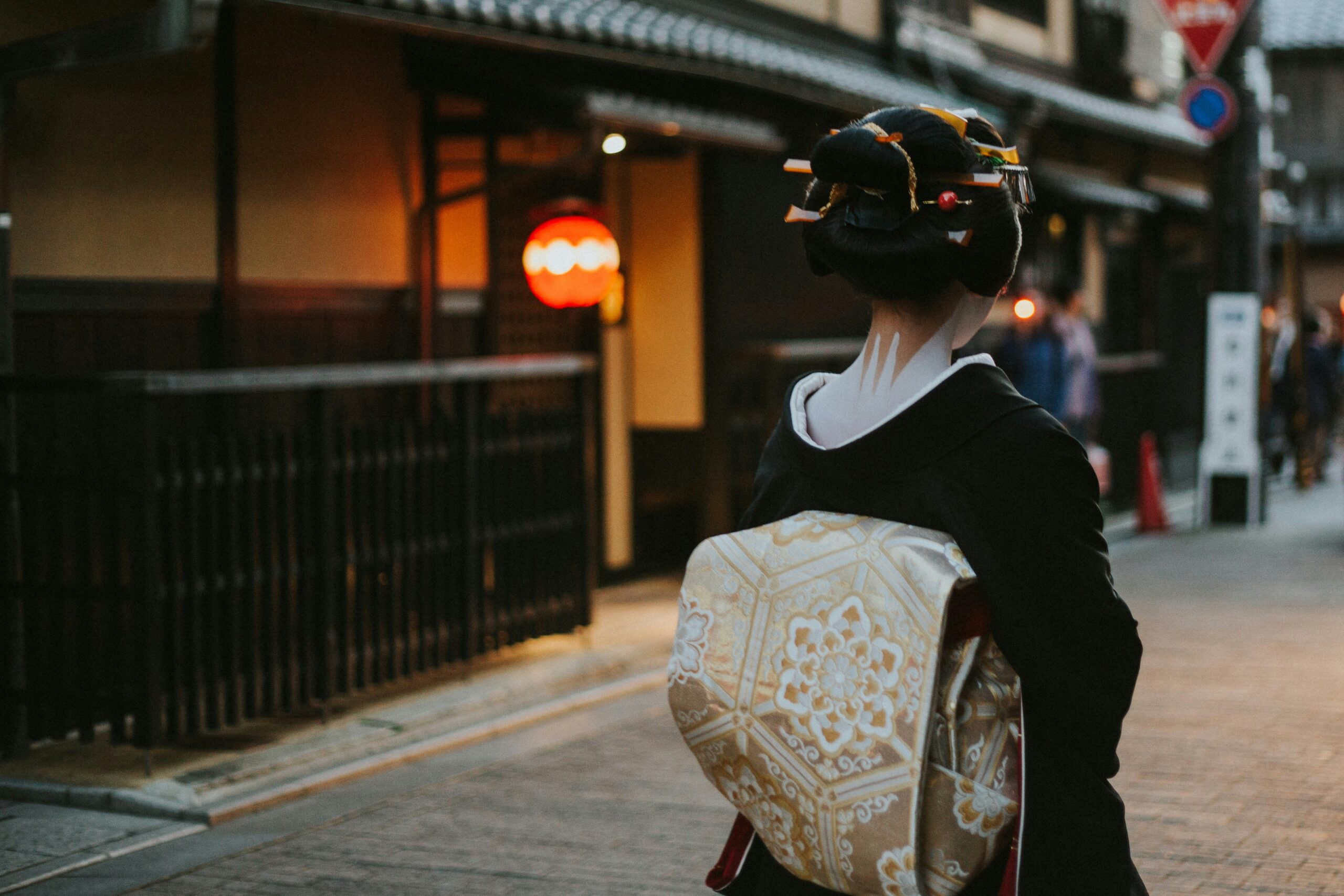On a weekend afternoon, I sat in a small café in New York’s Lower East Side, sipping my usual latte. In front of me, my laptop sat open, but I didn’t return my gaze to the screen. Instead, I glanced over to the next table, where a neighbor had a travel magazine open. A page caught my eye — the heading read, ‘Japan, Kyoto, Gion,’ accompanied by an image of a narrow cobblestone street lined with falling autumn leaves, and a maiko (apprentice geisha) adorned in a vivid, dazzling kimono, wearing a subtle yet graceful smile. Without thinking, I found myself captivated by the photograph. I felt a quiet ripple stir deep within me.
Before I knew it, I was searching for flights for my next long vacation. I knew exactly where I wanted to go.
I arrived in Japan on a clear mid-October day. From Kyoto Station, it was a short train ride followed by a brief walk to Gion. The moment I stepped into the district, my heart seemed to quiet, as if wrapped in the air of the place. Gion was unlike any city I had visited before. Amid the bustling shopping streets, a sudden silence steeped in layers of time emerged. Wooden houses with lattice windows, women in kimonos walking slowly, and the distant sound of a shamisen.
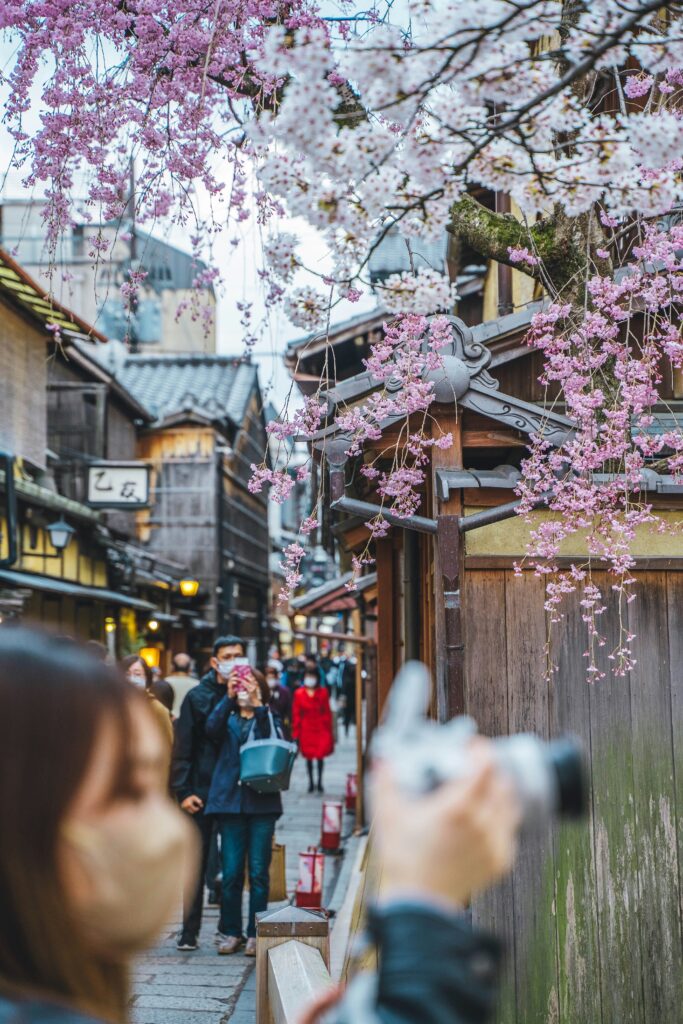
On my first day, I wandered through the heart of Gion. Hanamikoji, a narrow stone-paved street, was delicate and beautiful, with a rhythm clearly different from any modern city. People walked with a kind of hushed reverence, as if choosing even their footsteps with care. At one point, I caught sight of a young maiko walking gracefully ahead of me—her kimono swayed with each step, and the soft clinking of her hair ornaments echoed gently in the stillness. It was as though time had slowed to let her pass
For lunch, I entered a traditional Japanese restaurant housed in a remodeled machiya (townhouse). The modest wooden sign outside and the lattice doors left a deep impression. Inside, soft lighting and quiet background music welcomed me. I was seated by the window and ordered a yudofu (hot tofu) set meal. In a large ceramic bowl, silky tofu steamed gently, floating in a warm broth. The aroma of the dashi (broth) was soothing, and I felt myself warming from the inside out. “This,” I thought, “is what depth of flavor feels like.” I had never realized how richness could come from simplicity.
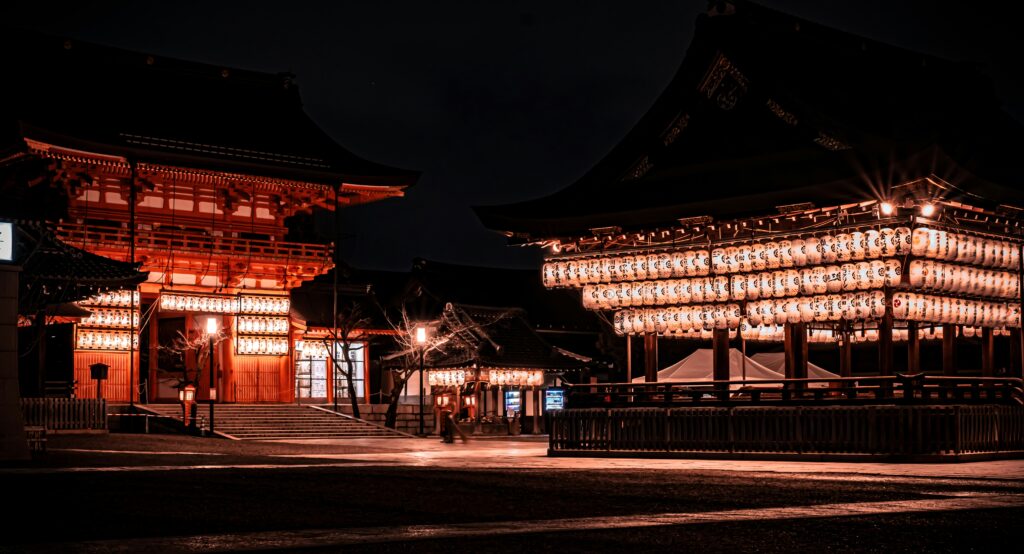
That evening, I visited Yasaka Shrine. The vermilion gate glowed in the sunset, as if it were aflame. Inside the shrine grounds, a couple in traditional attire was having their wedding photos taken. As if in blessing, the autumn leaves fell gently around them.

The next morning, I rose early and ventured a little beyond Gion to visit Nanzenji, a famous temple known for its beautiful autumn leaves. There, I stood beneath a grand brick aqueduct, and as I looked up through the red and yellow foliage at the morning light filtering through, something unexpected happened — I felt on the verge of tears. I didn’t know why, but in that moment, simply being “here, now” felt incredibly precious.
On my way back, I stopped at a local café, where I sat next to a woman. She was a little younger than me, with shoulder-length hair and a pale gray cardigan. When I saw her order a matcha parfait that looked delicious, I casually commented, “That looks really good.”
She smiled, a little shy, and replied, “Locals don’t really eat these ‘Kyoto-style’ sweets much. But lately, I’ve started to enjoy seeing my town through the eyes of tourists.”
Her words struck me. Perhaps we miss seeing things within our own world that are right before our eyes.
“Travel isn’t just about ‘going out,’” I said, “It’s also about ‘looking inside from the outside,’” to which she responded with a look of surprise before slowly nodding in agreement.
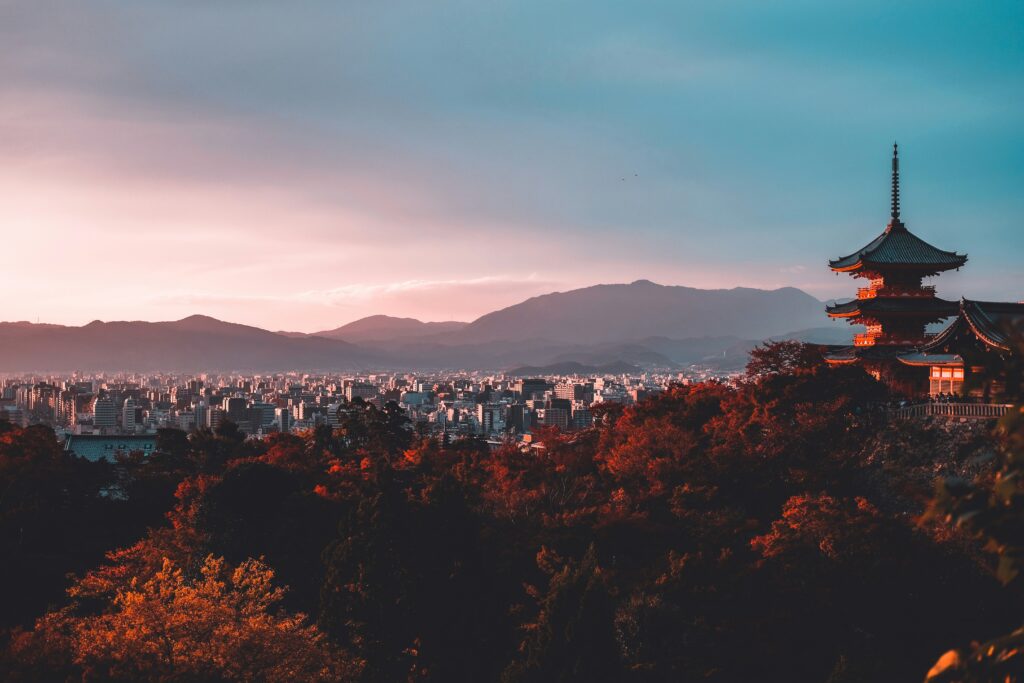
The following day, I went to Kiyomizu-dera, a temple about a 20-minute walk from Gion. On my way up the hill, I passed a souvenir shop where bright red persimmons hung out to dry, adding to the autumn colors. From the main hall of Kiyomizu-dera, I could see all of Kyoto’s streets bathed in the deep hues of fall. The view from the wooden stage was like looking into a sea of fiery leaves.
On my way back, I had some “mitarashi dango” — small rice dumplings on skewers, covered in a sweet and savory soy sauce glaze. Lightly grilled over charcoal, their smoky flavor evoked childhood memories, a taste that was strangely nostalgic.
On my final day, I walked along Shirakawa in Gion. The sound of water, the willows swaying in the wind, and the distant strumming of a shamisen created a quiet harmony. Here, in this place, I experienced something I hadn’t felt amid the rush of my daily life in New York — a sense of “space.” It was as if serenity had slipped into the spaces between the lines of life itself.
During this journey, I unexpectedly encountered a great deal of “silence.” But this silence was not empty; rather, it was filled with richness. The trip had begun by mere chance, yet now, I realize that the moment I saw that magazine page in the café was the turning point for me.

Kyoto’s Gion was not just a place where the old streets and traditions had been “preserved.” There, the breath of the past still flowed through the present. History does not live only in our memories. It lived in each step on the cobblestone path, in the creaking wood of the machiya houses, in the silence where the autumn leaves danced, and in the fleeting glimpses of maiko in the alleys — it was undoubtedly “alive.”
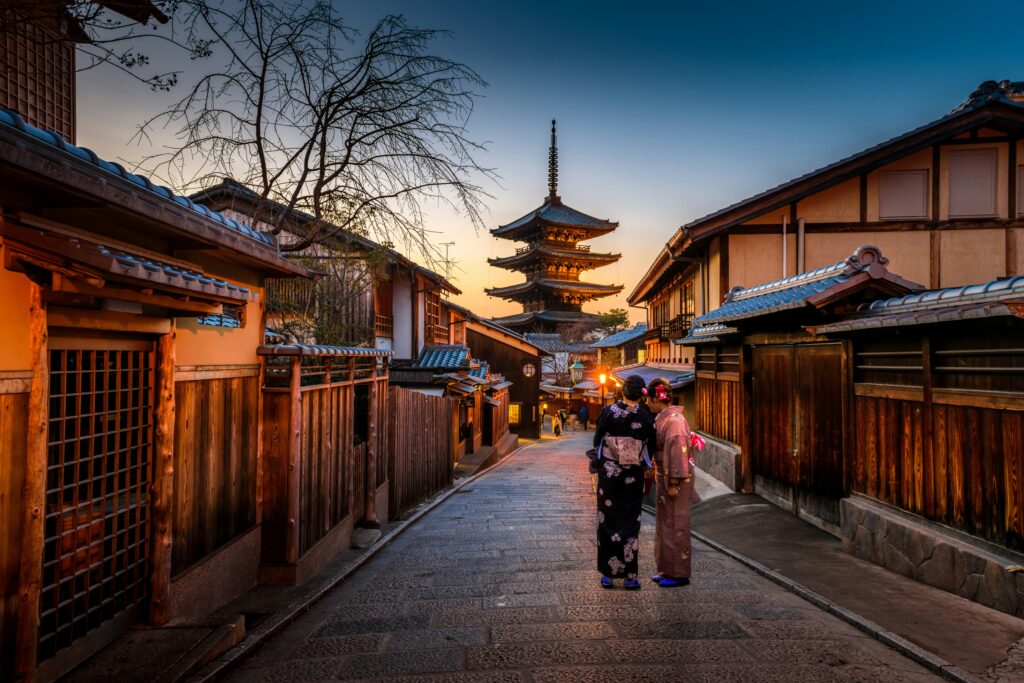
Standing in this ancient city, I felt a strange sense of connection. It was as if I were tied to something timeless, and the brief separations between past and present slowly wove themselves back together. Through this experience, forgotten perspectives one by one returned to me.
I’ve decided to travel again. But this time, not to escape daily life, but to enrich it further.
Something New Travel

